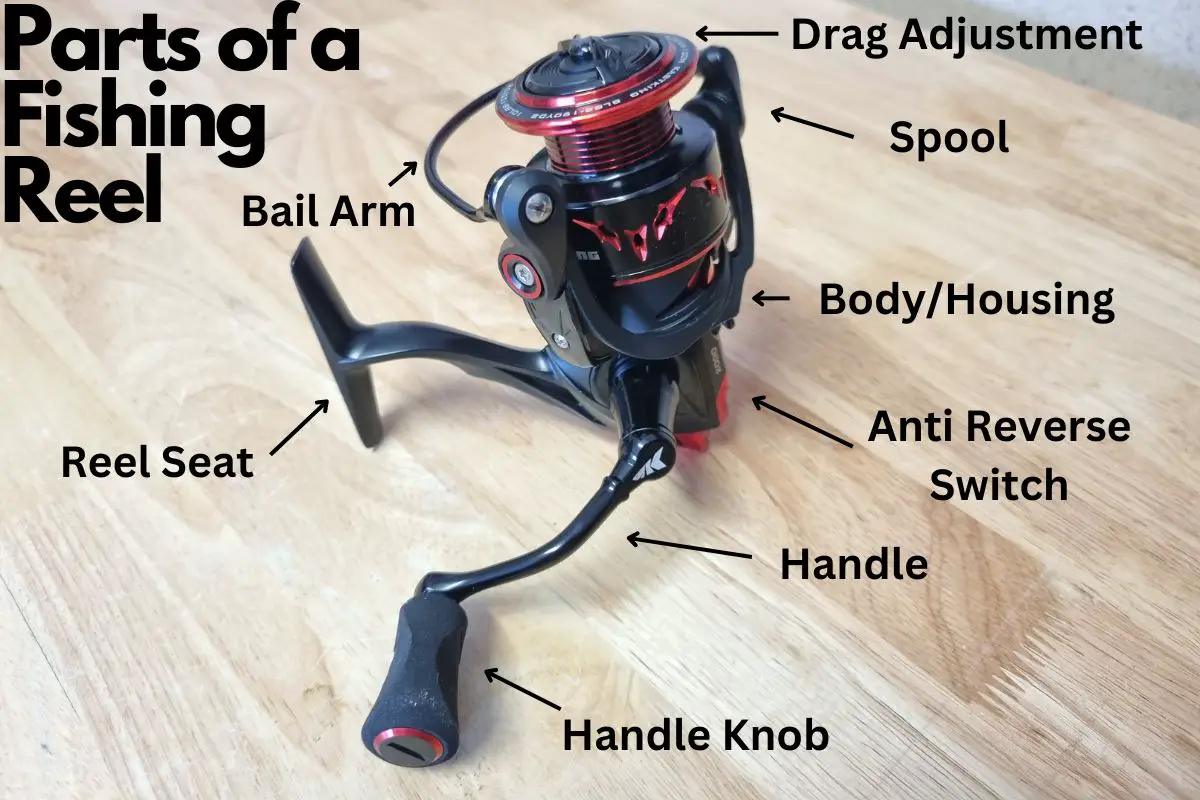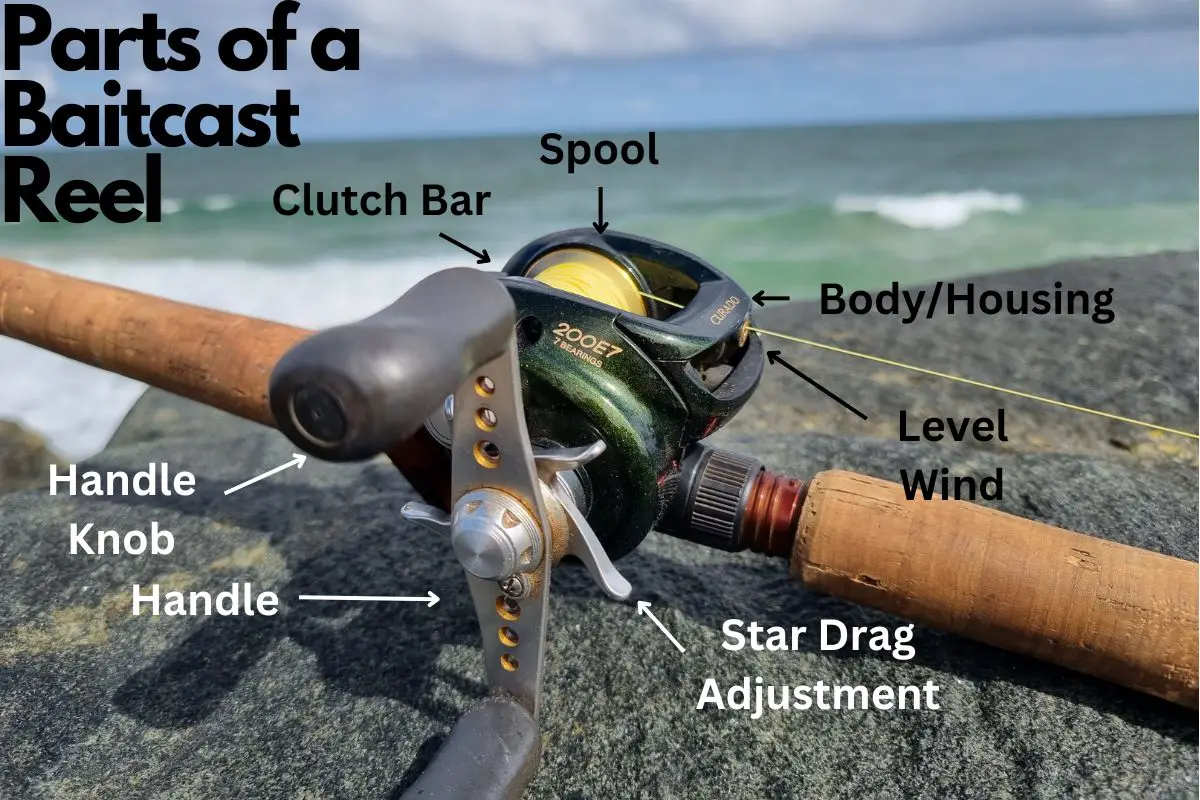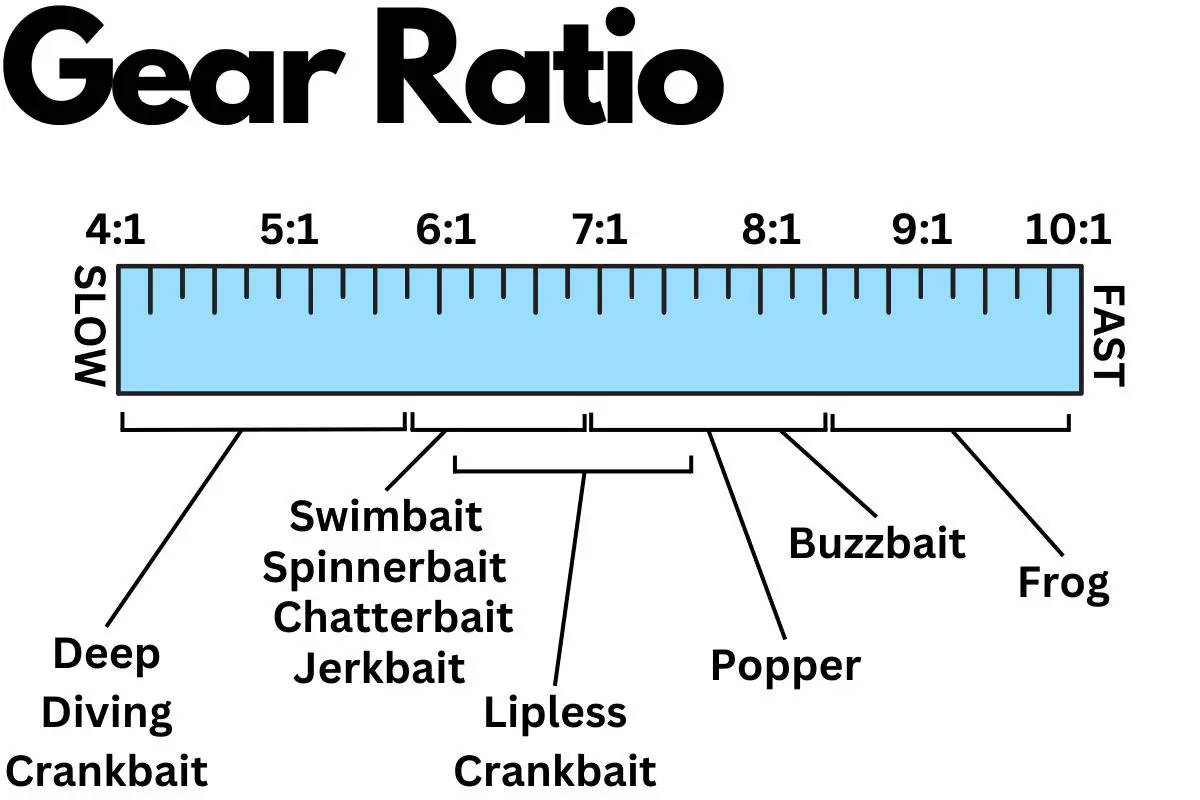A fishing reel consists of several essential parts: the handle, spool, drag adjustment, bail (for spinning reels), reel foot, body (or housing), gear box, line roller, and anti-reverse switch. Each part plays a crucial role in the reel’s operation.
| Part | Purpose |
|---|---|
| Handle | Used for winding in the line, retrieving the hook or caught fish. |
| Spool | Holds the fishing line. Allows for smooth release and retrieval of the line. |
| Drag Adjustment | Controls the resistance felt by a fish when it pulls on the line. |
| Bail (Spinning Reels) | Guides the line back onto the spool, preventing it from tangling. |
| Reel Foot | Connects the reel to the fishing rod. |
| Body/Housing | Protects the inner components of the reel. Made from durable materials to withstand exposure. |
| Gear Box | Houses the gears controlling the speed at which line is wound onto the spool. |
| Line Roller | Guides the line from the bail onto the spool during retrieval. |
| Anti-Reverse Switch | Prevents the handle from spinning backward, useful when a fish is on the line. |
| Ball Bearings | Reduces friction between moving parts, improving reel performance and longevity. |
| Level Wind Mechanism | Guides the line back and forth on the spool for even distribution and to avoid line dig. (Baitcasting Reels) |
| Main Shaft | The main axis that the spool spins around. Supports the spinning motion of the reel. |
| Pinion Gear | Engages or disengages the main gear, regulating the movement of the spool and handle. |
| Clutch Bar | Engages or disengages the reel’s casting mechanism. (Baitcasting Reels) |
| Clicker | Provides an audible sound when line is being taken off the reel, often used in trolling. |
| Skirt | Helps to keep water and debris out of the reel’s internals. |

Table of Contents
Handle
This is the part of the reel that the angler turns to retrieve the line. Some handles have ergonomic designs and non-slip materials for a more comfortable and secure grip. The angler should care for the handle because a damaged or slippery handle can interfere with effective reeling.
There are many different handle knobs depending on your hand size and the type of fish species you are targeting.
- Round Knobs: Typically small, round, and easy to grip. They’re common on many types of reels.
- T-Bar Knobs: Often found on saltwater or big game reels. Their T-shape provides a good grip for cranking in big fish.
- EVA Foam Knobs: Lightweight and comfortable to grip, especially in cold weather.
- Rubber Knobs: Durable and offer a strong grip even in wet conditions.
- Aluminum Knobs: Strong, lightweight, and durable, often found on high-end reels.
- Paddle Knobs: These have an elongated shape similar to a paddle, offering a comfortable grip for rapid winding.
- Power Knobs: Larger knobs designed for extra leverage when reeling in large saltwater fish.
- Ball Knobs: These are spherical and often provide an ergonomic and comfortable grip.
- Wing Knobs: Wing-shaped or semi-oval, designed to fit perfectly in the palm for maximum comfort and control.
Spool
The spool holds the fishing line, and its design allows for smooth release and retrieval. Advanced technologies like long-cast spool designs allow for increased casting distances. Anglers should care for the spool as any damage can cause the line to snag or break.
Fishing reel spools can vary significantly in their material composition and design, each catering to different types of fishing or angler preferences. Here are some common distinctions:
Materials
- Aluminum: Highly durable and resistant to warping under heavy loads. Aluminum spools are often found on higher-end reels due to their longevity and performance. However, they’re heavier and may not be suitable for ultralight setups.
- Graphite or Composite: These materials are lighter than aluminum, making them common in smaller, lightweight reels. They’re also more corrosion-resistant, making them suitable for saltwater use. However, they may not be as durable as aluminum under heavy loads.
- Stainless Steel: Occasionally used in certain high-strength, corrosion-resistant reels, especially for saltwater or big game fishing.
Designs
- Long Cast Spool: Designed to allow for greater casting distance. They’re typically deeper and narrower, which lets the line come off the spool more freely.
- Shallow Spool: These spools hold less line but offer less line resistance when casting, useful for precision casting and reducing line memory (line coiling).
- Double-Anodized Spool: This design features a double layer of protective coating to resist corrosion and wear. It’s beneficial for anglers who fish in harsh conditions.
- Braid-Ready Spool: These spools come with built-in structures or markings that allow braided line to be directly spooled without slipping.
- Vented or Ported Spool: These spools have holes or ports that help reduce weight and aid in line drying to prevent corrosion.
Drag Systems
Drag systems apply resistance to the line when a fish pulls on it. Modern reel designs may feature a front or rear drag system, each with unique advantages. Anglers should care about their drag system because a poorly maintained one can result in lost fish or broken lines.
Types
- Front Drag Systems: These systems are adjusted via a knob or dial on the front (top) of the spool. They are more durable and perform better under heavy loads due to larger drag washers. However, they might be slightly harder to adjust mid-fight as they can be partially obstructed by the line. I prefer them myself to rear drag.
- Rear Drag Systems: These are adjusted via a small dial or lever at the back of the reel. They’re easier to adjust while fighting a fish but might not perform as well under heavy loads due to smaller drag washers.
- Star Drag Systems: Commonly found on baitcasting reels, star drag systems usually use a star-shaped dial next to the handle. They provide a smooth and consistent drag but require the angler to let go of the handle to adjust, which could be inconvenient in the heat of a fight.
- Lever Drag Systems: Popular on conventional and trolling reels, lever drag systems allow for precise drag adjustments. The lever usually has a free spool position, strike position, and full position, providing a range of drag settings.

Bail (Spinning Reels)
The bail guides the line back onto the spool and prevents tangling. Some reels feature automatic bail return. Proper care of the bail ensures smooth line management, reducing the chances of line issues during casting or retrieval.
Reel Foot/Seat
The reel foot connects the reel to the fishing rod. Anglers should ensure that the reel foot is firmly secured and not damaged to keep the reel stable during fishing.
Body/Housing
The body or housing protects the inner components of the reel. Modern reels can be made from materials like graphite or aluminum. The durability and weight of the reel body can significantly impact the overall fishing experience, thus regular cleaning and maintenance are crucial.
Gear Box
The gear box contains the gears that control the speed at which the line is wound onto the spool. High-quality reels may feature high gear ratios for fast retrieval. Proper care of the gear box ensures smooth operation and extends the reel’s lifespan.
The main decision around gear boxes is the desired gear ratio. This controls the retrieval rate and impacts the techniques that reel will be suited for. A gear box with a high gear ratio retrieves more line per crank and is ideal for fast-moving jerkbaits. A low gear ratio is better designed for deep-diving crankbaits. They also generally provide more torque when trolling for large saltwater species.

Line Roller
The line roller guides the line from the bail onto the spool during retrieval. A well-maintained line roller prevents wear and tear, ensuring smooth and consistent line retrieval.
Anti-Reverse Switch
The anti-reverse switch prevents the handle from spinning backward when a fish pulls. The smooth operation of this switch is vital for hook setting and line control.
Ball Bearings
These reduce friction between moving parts. More ball bearings typically mean smoother reel operation. Regular maintenance keeps them functioning smoothly and extends the reel’s longevity.
Generally, the more ball bearings the smoother the retrieve the reel will have, at the expense of cost and weight. All the most premium spinning reels will have 10+ ball bearings.
You should also consider the material of the ball bearings. If you are going to be fishing in saltwater then stainless steel ball bearings are essential.
Level Wind Mechanism
This part, found on baitcasting reels, guides the line back and forth on the spool for even distribution. It prevents line dig and backlash, ensuring a smooth casting and retrieval experience.
Main Shaft
This supports the spinning motion of the reel. Any bends or shaft damage can greatly affect the reel’s performance.
Pinion Gear
This gear regulates the movement of the spool and handle. Maintaining the pinion gear ensures the reel operates smoothly and effectively.
Clutch Bar
Found on baitcasting reels, it engages or disengages the reel’s casting mechanism. Ensuring its proper operation can prevent reel malfunctions during casting.
Clicker
Provides an audible sound when line is taken off the reel, often used in trolling. Regular checks ensure the clicker is working properly, allowing the angler to respond when a fish strikes.
Skirt
This helps to keep water and debris out of the reel’s internals. Regular checks and cleaning of the skirt can prolong the reel’s lifespan by preventing internal corrosion or debris build-up.
